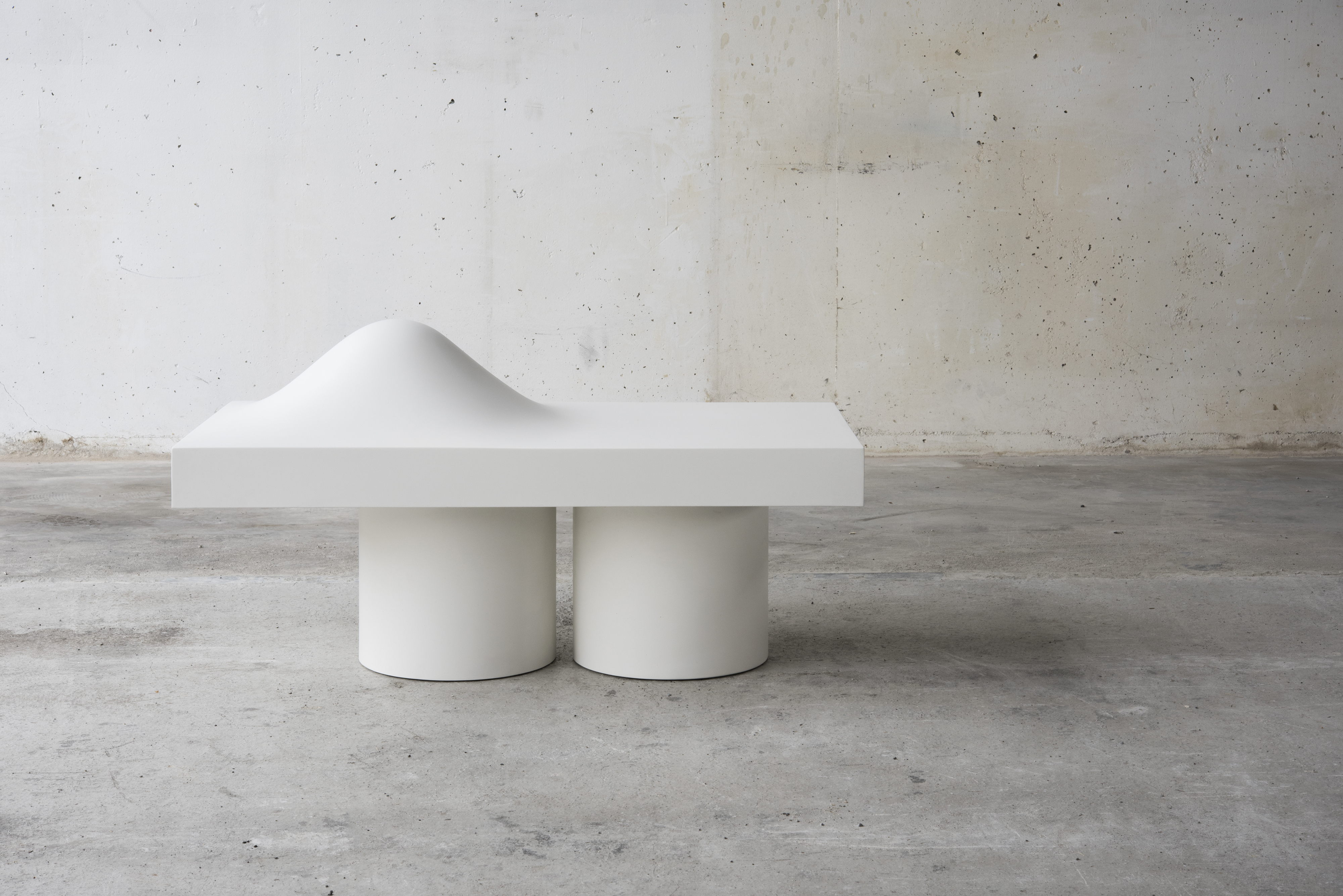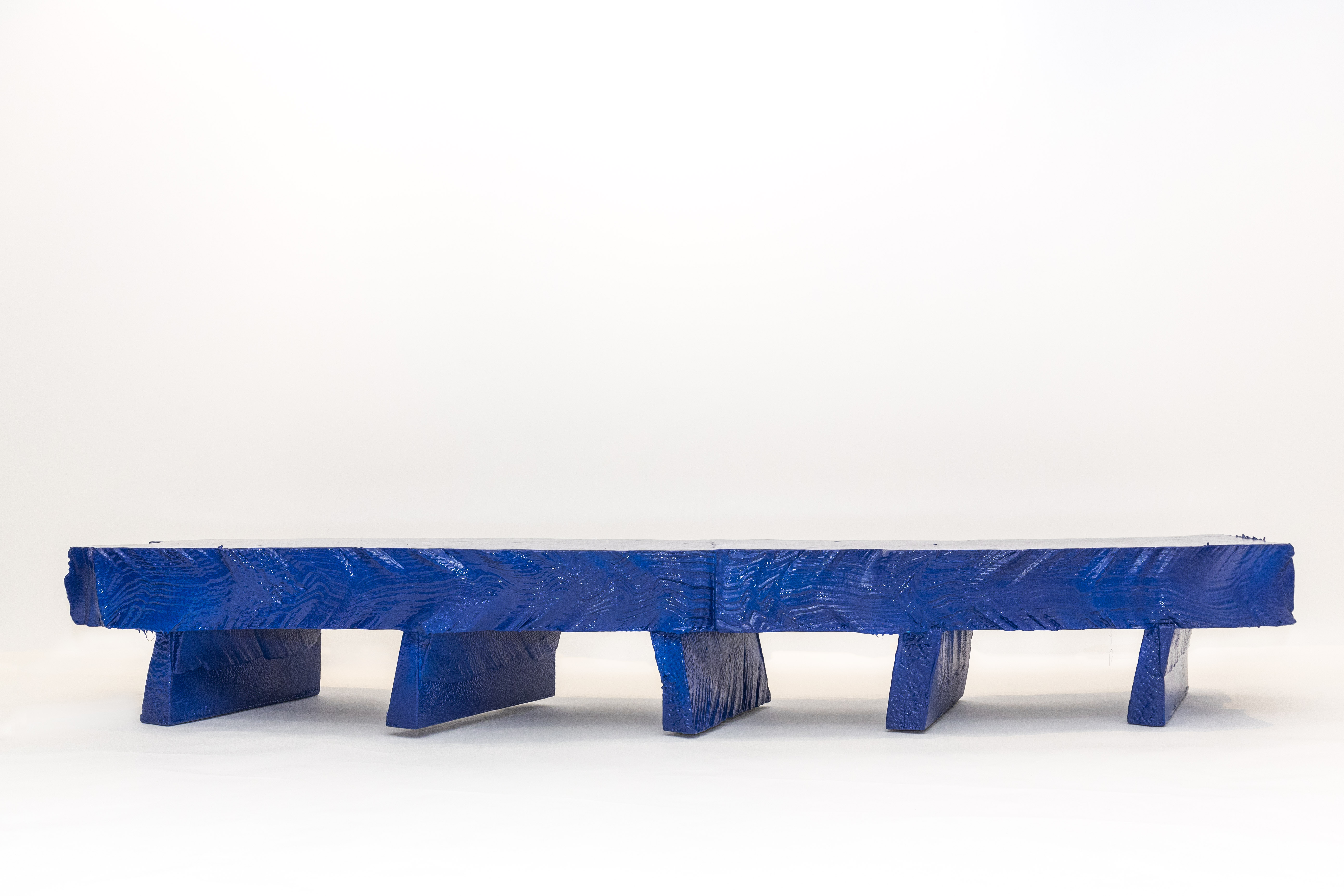The New New Domestic Landscape
In 1972, the Museum of Modern Art mounted the seminal design exhibition The New Domestic Landscape, a showcase for the radical designers then working in Italy (among them was Gaetano Pesce, who is included in DNA). The show introduced multiple new aspects of design to America: speculative, narrative, and materially experimental modes. These tendencies are still unfolding today, as can be seen in the three benches shown here. Najla El Zein’s Distortion series uses a deceptively simple device — a “bump” rising from an otherwise rectilinear form — to strong psychological effect, occupying one of the two available sitting positions, and leaving the other as an invitation to solitude.
El Zein’s work is made in a carefully honed, perfectly white concrete, which has a delicate matte surface; François Bauchet and Max Lamb have been equally attentive in selecting, or indeed, inventing the materials for their objects. Bauchet’s striking red bench is rendered in a composite of concrete, sand, and resin. The piece has an architectural firmness, in keeping with the fluted column of one its uprights.

Lamb’s design is from his Scrap Poly series, in which salvaged polystyrene foam (one of our cheapest and least sustainable materials) is transformed by sheathing it in high-color rubber polymer. The scallop-shaped marks of Lamb’s carving process lend visual rhythm to the elongated form. Like the progressive designs shown at MoMA almost fifty years ago, these three objects point to future directions of travel, peering just over the horizon.
DNA is a collaborative essay project, intertwining three gallery programs into a single, generative presentation.




